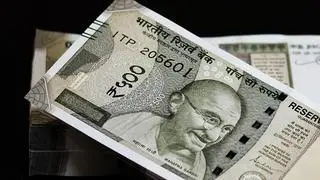Once the curse of the Covid-19 pandemic is over, a new world order will emerge, as many countries have lost faith in China. Many leading multinational companies operating there are actively looking out for better business destinations, and India is one of them. In such a situation, the state of the aviation infrastructure in any country is a direct indication of its prosperity and potential for growth with an output multiplier of 3.25 and employment multiplier of 6.10. The airport infrastructure in India has been contributing to around 2.4 per cent to the country’s GDP, and direct and indirect employment to about 4.27 crore people.
But the lockdown due to the Covid-19 pandemic has resulted in loss of about ₹40,000 crore per day. The aviation sector is expecting a loss of $89.8 million in passenger demand and an overall financial loss of over $16.5 billion in terms of potential GDP.
Soon, we may be exiting the Covid-19 lockdown; people will start moving and businesses rolling up.
The Indian airport sector has tremendous potential to become an engine to speed up the economic and industrial activity. However, the airport sector has its own problems. After handling 1.27 crore domestic passengers in January 2020, all the airports now have almost nil passenger traffic, while their financial commitments in terms of cost of capital and debt continue to place stress on their performance. The sector needs urgent government support to recover and play an enabling role in rebuilding the economy. There are various actions/decisions which the government should consider to revitalise the sector.
First, reduce financial outgo of airports in terms of suspension of Central and local taxes at the airports. Airport lease revenue, which gives an annual income of over ₹3,000 crore to the AAI (majority from JV & PPP airports), may be waived off for the next one year. Soft-term loans to meet fixed expenses like salary, wages, maintenance, etc equivalent to 12 months’ requirement, payable within a certain time and facilitation of debt renegotiation, would help in sustenance of the sector. Banks also need to redefine NPA provisions while extending the time limits for bank guarantee and revise the working capital norms suitably.
Second, the airport sector may be supported in terms of moratorium on interest payments for the next 6-9 months. Banks today have a deposit of ₹4 lakh crore with the RBI on reverse repo basis, and are yet to commit this fund to industry. The same could be better directed to be allowed for long-term funding on fresh capex for the airport sector.
A direction to infrastructure banks like IIFCL and IFCI to support new capital requirements may be another welcome step. In fact, now it is time to declare the airport sector as the core infrastructure industry, enabling priority lending for 5-20 years of duration.
Third, the initial reopening of airports will need to comply with government advisories on screening of passengers, leading to deployment of additional workforce, incurring expenditure on personnel protective equipment (PPE), masks, sanitizers and floor cleaners. This extra expenditure needs to be compensated. The Airport Economic Regulatory Authority (AERA) should be empowered to work out fiscal and monetary help and device a special compensation package in terms of passenger service fee (PSF) revision without the government giving any direct financial benefit in terms of cash infusion.
Fourth, a policy reversal in awarding airports. In last 15 years, the sectors like telecom, coal, solar and wind power have suffered because of the concept of highest bidding at the allotment stage. Recently six airports, of the AAI and the Jewar airport in Uttar Pradesh have also been allotted to highest bidders. These winners having committed very high costs, will either default on payment/execution delays or will have no option to charge higher PSF. Nobody —— neither government, nor operators, nor passenger — will benefit in the long run, and ultimately the country will suffer in terms of development and capacity build-up.
Support to the airport sector in India is today the need of hour. Short and long term financial and policy support to the sector will go a long way in evolving a suitable Covid-19 exit strategy while boosting the economic and business activity in the country.
The writer is Hindustan Aeronautics Ltd








Comments
Comments have to be in English, and in full sentences. They cannot be abusive or personal. Please abide by our community guidelines for posting your comments.
We have migrated to a new commenting platform. If you are already a registered user of TheHindu Businessline and logged in, you may continue to engage with our articles. If you do not have an account please register and login to post comments. Users can access their older comments by logging into their accounts on Vuukle.